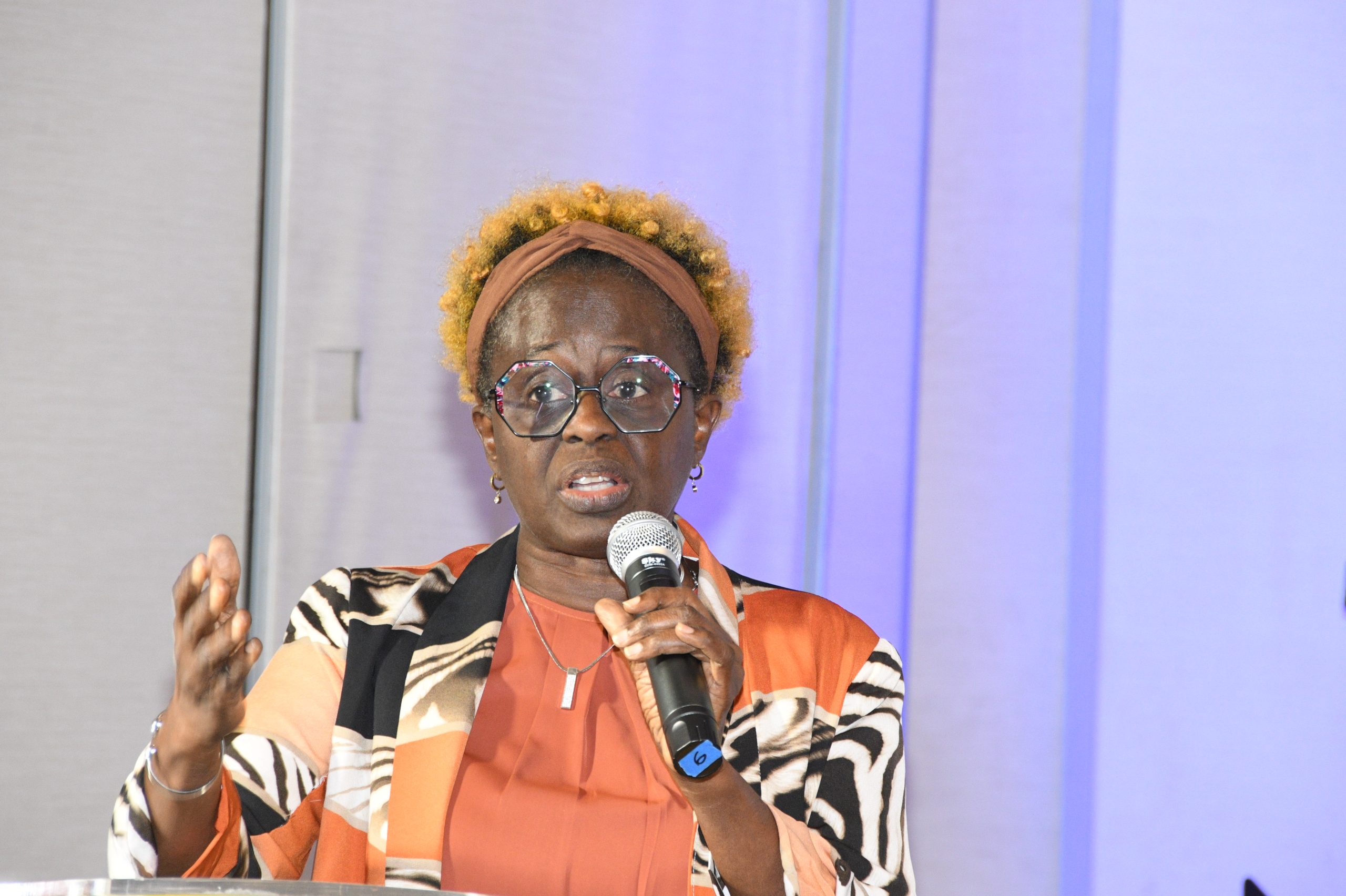Photo Caption: Marlon Fletcher(left), lead, community engagement, National Helmet Wearing Coalition and president of the Jamaica Motorcyclist Association, presents an appreciation gift to Dr Lovette Byfield, a public health specialist, consultant, and social and behaviour change expert, who participated in a panel discussion that explored storytelling as an effective strategy to drive advocacy inclusion and behaviour change. The occasion was the Heads-Up Regional Think Tank Forum on motorcycle helmet safety held at the AC Hotel in Kingston recently.
Harnessing the power of storytelling to influence behaviour and encourage greater compliance with helmet wearing was a key focus of the Heads-Up Regional Think Tank on motorcycle helmet safety.
The Think Tank, held at the AC Hotel in New Kingston recently, aimed to identify opportunities for regional collaboration on efforts that reduce motorcycle fatalities and increase helmet wearing in Jamaica and the wider Caribbean and Latin America through strategic advocacy and behaviour change.
The session was organised by the JN Foundation through the National Helmet Wearing Coalition, in collaboration with the FIA Foundation, and the National Road Safety Council, brought together regional experts, policymakers, road safety advocates, motorcycle drivers and communication professionals to explore solutions to the growing crisis of motorcycle-related injuries and fatalities.
Dr Lovette Byfield, a public health specialist, consultant, and social and behaviour change expert, in a panel discussion, noted that achieving meaningful behaviour change is a complex undertaking that requires a range of interventions, with storytelling serving as a powerful and effective approach.
“It is a process that aims to change social conditions and individual behaviours, [including] the condition that facilitates the behaviour,” she said.
Highlighting the role of storytelling in advocacy and behaviour change, Dr Byfield emphasised the power of testimonials as a key tool. She pointed to the impact of storytelling in the success of a 2008 HIV/STI programme, which effectively used personal stories to address the high levels of stigma and discrimination faced by people living with HIV.
Dr Byfield underscored that lessons from other countries also showed there were positive outcomes when individuals publicly shared their experiences living with HIV but stressed that extensive preparatory work was essential before crafting and delivering such messages.
“We had to prepare the storyteller, get a good sense as to what exactly this would mean to be out there telling your story in an environment where there was such stigma and discrimination, so we provided psychosocial support,” she related.
Stressing the long-term impact of strategic storytelling and public engagement, Dr Byfield pointed out that after nine years following the start of the programme, the Knowledge, Attitude, Practice, and Behaviour (KAPB) survey in 2017 revealed a notable shift toward more accepting attitudes towards people living with HIV.
“It was 28.9 per cent in 2008 and it shifted to 32.4 per cent,” she said, acknowledging that there were other contributory factors that also helped to improve the outcome.
Dr Byfield also noted the importance of strategic planning in the storytelling process.
“We have to ensure alignment of message and messenger for consistency and credibility. Whoever it is that’s taking the message, we have to strive to ensure that the lifestyle matches as best as possible. We could have some challenges if we have a fall out in that area. We have to ensure that advocacy for policy change to improve access, resources and the structural changes to create an enabling environment goes along with the storytelling.”
Also supporting the storytelling perspective was Kate Turner, media and advocacy manager at the FIA Foundation, who highlighted the global impact of strategic storytelling in shifting mindsets and garnering public support for safer roads.
She recommended that stories should be refined into a single, compelling sentence or headline to effectively convey the message to strengthen advocacy efforts.
“Explain why something is happening, talk about solutions, talk about the thing that you want to change and talk to the lay person. Try and work out if what you’re telling them makes sense, [if it] makes them want to change something, and if it doesn’t, start again,” she said.
She further advised that advocates should tailor their stories to their audience, emphasising the importance of knowing the narrative structure, grounding it in human experiences supported by data, and ensuring the call to action is clear and compelling.
Also participating in the panel discussion were Christopher Atkinson, member of the National Helmet Wearing Coalition, and Selwyn Richard Persaud, director and secretary general, Trinidad & Tobago Automobile Association.
The panel was one of five that provided a platform for dynamic dialogue and policy-orientated solutions to address helmet usage and enforcement. The other panels addressed regional perspectives on helmet use; legislative and regulatory gaps towards regional policy solutions; social and economic impact of motorcycle crashes and fatalities as a barrier to development; and best practices and solutions creating safer motorcycle drivers.




